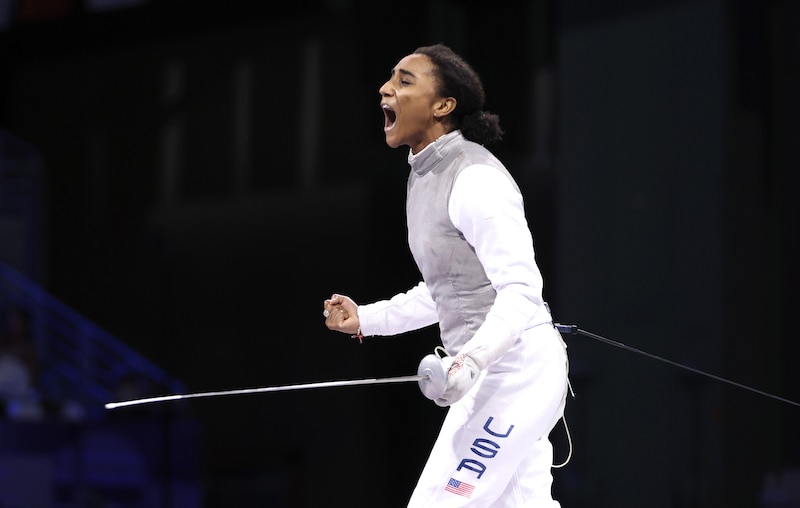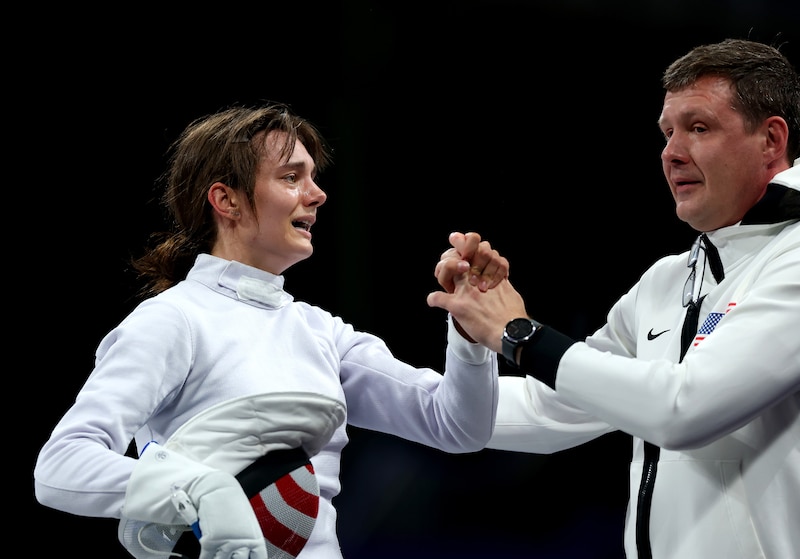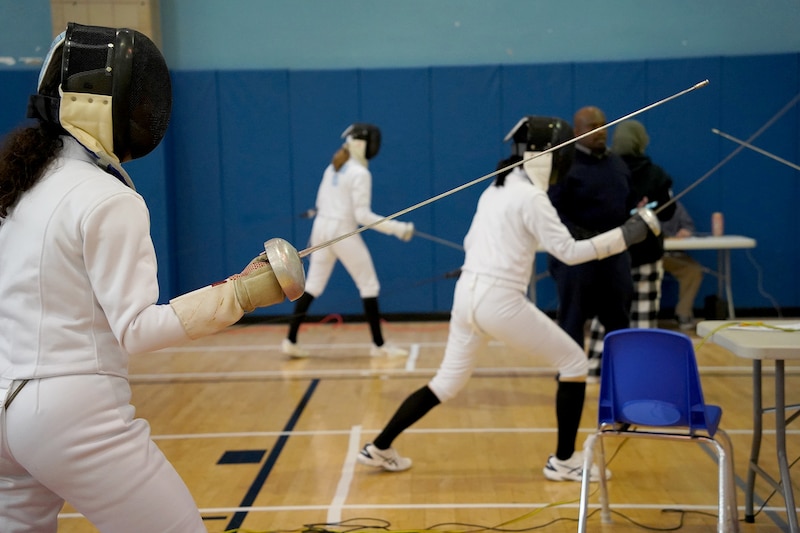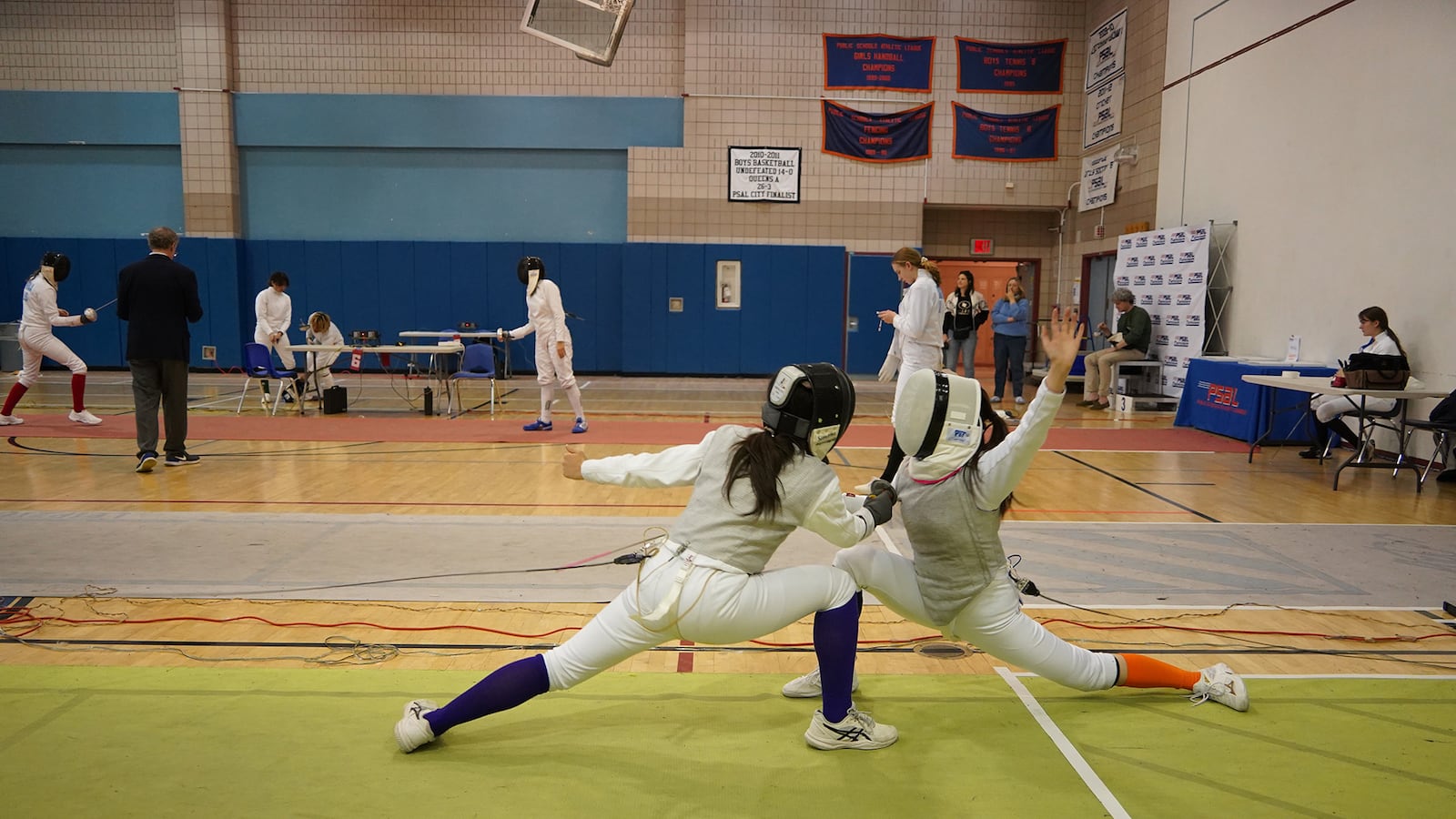Sign up for Chalkbeat New York’s free daily newsletter to keep up with NYC’s public schools.
Fencing is often seen as an elite sport, the province of pricey private schools on Manhattan’s Upper East or West sides.
And while the sport is certainly not cheap — startup equipment costs upwards of $450 — there’s a small, but thriving fencing scene at New York City’s public high schools, spawning Olympian fencers, including Anne Cebula, a Brooklyn Tech alum from Bensonhurst, representing the U.S. this year in the women’s épée competition. Her Olympic teammate in the foil competition Lauren Scruggs, a Queens native, attended Packer Collegiate, a Brooklyn private school.
Of New York City’s roughly 400 high schools, there are 22 girls and boys fencing teams in the Public Schools Athletic League, or PSAL, said Loweye Diedro, a PSAL sports coordinator overseeing fencing, double dutch, cricket, stunt, and table tennis.
Athletes from these teams are often part of the city’s larger fencing community, fencing each other at private fencing clubs in Manhattan’s Chelsea and elsewhere, said Diedro, a fencer and fencing coach herself, who is hoping this year to launch a “Mayor’s Cup” for top fencers at the city’s public and private schools to play each other.
About half of the public school teams are based at some of the city’s most prestigious high schools, including Bronx Science, Stuyvesant, Beacon, and Townsend Harris. Others are at large comprehensive high schools, like Francis Lewis, Cardozo, and Tottenville. And some teams draw from smaller schools that share a campus, such as Bronx United, which is composed of students from the Community School for Social Justice and Health Opportunities High School, as well as a team on Brooklyn’s John Jay campus, which serves several schools.
Students from other schools can fence on these teams as well, through PSAL’s “access program,” which allows students to try out for teams at other schools within their district when their own school doesn’t have the sport. A student from Edward R. Murrow High School, for example, fences on Brooklyn Tech’s boys team, Diedro said.
The teams at public schools help students get over the “hurdle” of the expensive equipment and costly travel to competitions, Diedro said. “We give you all the equipment,” she said. “We travel within the five boroughs, so everything is pretty accessible.”
Efforts to make fencing a more diverse sport
Nowadays, kids often start learning to fence by the age of 8, Diedro said, but she estimated that more than half of the fencers who play on their high school teams don’t pick it up until later, like Cebula, who didn’t start until the age of 15, when she attended Brooklyn Tech.
Cebula, who is currently ranked No. 2 in the U.S. for her discipline, did not win any medals in Paris. But Scruggs — the third ranked American in women’s foil — took the silver this week to make history as the first Black fencer to win a medal for the U.S. in an individual women’s event. Scruggs also was part of the U.S. women’s foil team on Thursday taking home the gold against Italy. It’s the first ever gold medal for a U.S. fencing team in the Olympics.

Fencing, Diedro said, offers a way in for a variety of students who might feel that other sports have been off limits to them.
“In the weight room, the basketball players and the football players always made remarks that we fencers didn’t look like we played a specific sport. Like, we don’t really look like track athletes, or we’re not tall like basketball athletes,” she said. “Fencing is a sport for everybody. Everybody’s beatable. You could be 5’1” or you could be 6’3,” and you just kind of have to start at the same foundation and just really hone in on discipline and skills that are going to help you in so many other areas in life.”
Diedro is deeply entwined with the city’s fencing community: She started when she was 5 years old through the Peter Westbrook Foundation, an organization started by the first Black Olympian to win a fencing medal.The Westbrook Foundation has worked to diversify the sport, particularly among Black fencers, by offering students like Diedro scholarships to cover equipment and competition travel. Scruggs is a member of the foundation, along with past Olympic fencer Keeth Smart, another Brooklyn Tech alum.
In fact, watching Smart’s dramatic win in the 2008 Beijing Olympics, where he won a silver medal on the men’s saber team, inspired Cebula to pick up an épée and follow in his footsteps.
“It was the most beautiful thing I’d ever seen in my life,” Cebula told THE CITY.

She was 10 at the time. Her parents were immigrants from Poland — her mother, a nurse, and her father, an electrician – couldn’t afford lessons, Cebula told THE CITY. But she held onto her dream and opted to go to Brooklyn Tech because of it.
Scruggs started fencing at the age of 7, inspired by her Star Wars-loving brother. But she was aware that she looked different from a lot of other kids at fencing clubs and competitions.
“Fencing has largely certainly been a non-Black sport,” Scruggs told the Washington Post. “I hope that people who look like me, girls who look like me, feel they have a place in this sport.”
Fencing requires focus and being ‘meticulous’ about technique
To be successful at fencing, like most sports, takes dedication, said Diedro, who like Cebula, fenced for Columbia, which is known as a fencing powerhouse. (Though this year’s Olympic team has a fair number of Harvard students, including Scruggs.)
“You have to really be very focused, and you have to be very, I would say, meticulous about getting the right technique, getting the right foundation, because that really takes you to the next level,” Diedro said. “It’s a lot of practicing every day, not just not every other day.”

Diedro is hoping that more young New Yorkers will discover fencing, and she’s hoping that some schools that discontinued their fencing teams will re-launch them, especially since those schools have already invested in the equipment.
“You might not think that you’re the type of person that should be a fencer or be on a fencing team,” Diedro said. “If the opportunity presents itself, definitely take advantage of it, because we’ve had so many successful fencers who come from all different types of backgrounds.”
Correction: Based on incorrect data, this story initially said there were 25 girls fencing teams. There are 22.
Amy Zimmer is the bureau chief for Chalkbeat New York. Contact Amy at azimmer@chalkbeat.org .

